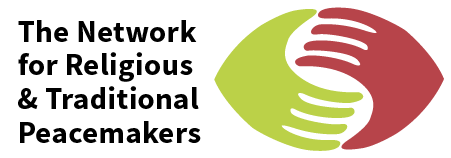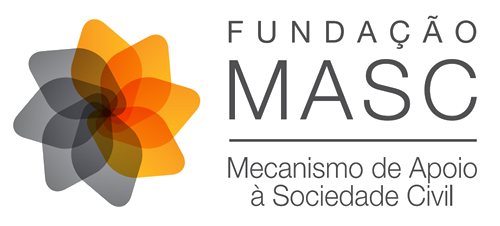Stories for Peace and Social Cohesion –
A Toolkit for Peace Practitioners and Mediators
Stories for Peace and Social Cohesion feature six illustrated stories, telling true-to-life experiences with conflict, displacement, inter-religious dialogue, and how everyone can act to build peace and community cohesion. The stories were originally produced for the “Inter-religious Dialogue for Peace and Social Cohesion in Mozambique (ID-PEACE)” project, which seeks to reduce inter-and-intra communal tensions and related religious freedom abuses by strengthening social cohesion and religious tolerance in Mozambique. The English language versions are available for wider use across the globe.
How these stories are designed to be used:
1. In interfaith dialogues to prompt discussion about conflict resolution and peacebuilding.
2. By community groups working towards social cohesion.
3. By change-makers advocating for peace.
4. By anyone interested in bettering their understanding of conflict, conflict resolution, peacebuilding, and social cohesion.
Mohammed’s Story
Growing up, Mohammed felt very alone, often troubled by conflict at home and the unfair access to opportunities in his community. A chance encounter with his cousin Salif, whose false promises of a better life and the change to be part of fighting for what he says is a just cause, leaders Mohammed to join a group of violent extremists and take up arms. Mohammed is soon full of regret about the violence he is now part of.
Questions for Reflection
1) What type of conflict did Mohammed experience?
2) How did social/economic factors contribute to Mohamed’s decision to join the armed group?
3) How did political, religious, and ethnic division influence Mohammed’s choices?
4) How does this relate to Mohammed’s story?
5) Mohammed’s cousin Salif and Abdirashid had very different beliefs based on their faith – how can we counter messages of hate and ensure messages of peace and tolerance?
6) What are some of the passages or words found within different religions that confirm peace, love and tolerance above all?
7) How does this story relate to the real-life circumstance in our communities?
8) Abdirashid helped Mohammed – how can one person/one voice have such an impact? How can you use your own voice to encourage peace within your community?
Paulo’s Story
Paulo is a member of an early warning alert group in his community, located in a district known for high risks of recruitment by violent extremists. Buying bread one morning, his suspicions about a young man unknown to him lead him to put the community alert system into action. Thanks to Paulo’s quick action, resulting investigations and community dialogue saved 3 young men from being recruited.
Questions for Reflection
1) Is there a community conflict early warning alert system or group where you live? If so, how does it work? If not, how could one be implemented?
2) In Paulo’s story, many different kinds of people are part of the early warning group – why is this important?
3) Does early warning help prevent conflict escalating? How?
4) In the story, the community alert system includes response interventions – why are these essential?
5) Why would a particular area be known as a “recruitment location?” What strategies can be put in place to reduce recruitment risks?
6) Paulo mentions that lack of jobs and hope contribute to recruitment, why is this?
7) What kinds of “false promises” are used in recruitment tactics?
Miriam’s Story
Miriam’s story is painful. Violent attackers strike her community, killing her husband and eldest son, and kidnapping her daughter, Yousufa. As the conflict around her escalates and fearing for her younger children’s safety, she flees her home, starting over again while praying everyday for Yousufa. When she sees her son, Salim, speaking to some young men she knows are attempting to recruit him with false promises, she seeks help hoping she will not lose Salim too.
Questions for Reflection
1) What types of conflict has Miriam experienced?
2) What are the consequences of the conflict for Miriam, her family and the village?
3) Miriam recalls the attack dividing people. Why is it important to remain strong and united in the face of conflict? How can communities maintain solidarity?
4) Miriam is worried about who Salim is talking to – what could they be saying to convince him to join their group?
5) Salim is angry. Peace is absent from his heart. How is this affecting him?
6) What could happen if the conflict at home between Miriam and Salim is not resolved?
7) Miriam feels she can’t resolve the conflict with Salim alone – did she take the right step asking for help? How can Miriam and her Imam help Salim?
8) What do different faiths say about anger? About people who encourage anger and division? How can we use religious teachings to discourage anger and promote peaceful coexistence?
Maura’s Story
Maura is part of a community Savings Group, a mixed group of women of different religions, ages, and birthplaces who share a common bond of wanting to improve life for their families. Anger and intolerance almost ends the Savings Group when an argument arises between two women of different faiths. Maura takes a stand, raises her voice and reminds everyone that peace among them will lead to success, while anger will result in failure.
Questions for Reflection
1) Religious pluralism is about people of different faiths peacefully coexisting, recognizing, and accepting each other’s beliefs. What is the story shows the value of religious pluralism?
2) Accepting differences promotes social cohesion. How does Amade and his wife, Ana, help to promote social cohesion?
3) People of different religions, ethnicity, politics, and languages now live with Amade and Ana. What could some potential conflicts be and how can they be avoided?
4) Amade is disabled. Does his ability hinder him in any way from being a good leader? Are people with disabilities included in peacebuilding? If not, how can we intentionally increase their participation and leadership?
5) Amade says “I live by both God’s teachings and the Constitution.” What do different religions teach about tolerance and peace? What does your country’s constitution say about freedom of religion?
6) Salome is traumatized. How can trauma affect a person? Why is it important to understand trauma for peacebuilding and social cohesion?
7) Ana isn’t comfortable speaking at community meetings. How do we ensure that everyone is meaningfully included in building social cohesion, even if they do not want to participate in community meetings?
8) Religious intolerance created conflict in the building project. How does intolerance hinder progress in everyday life?
Amade’s Story
Amade is a community leader whose disability doesn’t stop him from being a man who gets things done. When large numbers of people displaced by conflict arrive in his community, he swiftly acts to welcome, care for, and build social cohesion. He and his wife Ana open their home to some of the displaced. Amade’s community work and Ana’s everyday actions illustrate that anyone can stand for inter religious dialogue, peace and tolerance in their everyday lives.
Questions for Reflection
1) How does the story show the value of religious pluralism?
2) Accepting differences promotes social cohesion. How do Amade and Ana, help promote social cohesion?
3) Amade says “Everyone comes with their own habits and customs.” How can religious, ethnic, political and other differences lead to conflict? How can people live together peacefully?
4) Does Amade’s disability hinder him in any way from being a good leader? Are people with disabilities included in peacebuilding? If not how can this be improved?
5) Amade says he lives by both God’s teachings and the Constitution. What do different religions teach about tolerance and peace? What does your country’s constitution say about freedom of religion?
6) Ana isn’t comfortable speaking at community meetings. How do we ensure that everyone, in all their diversity, is meaningfully included in building social cohesion?
7) Religious intolerance created conflict in the building project. How does intolerance hinder progress in everyday life?
Alberto’s Story
Alberto is a peace ambassador, resolving conflicts and promoting peace in his community. When two neighbors disagree about the boundary line of their lend, he steps in to help resolve the tense conflict. By inviting them to a community discussion and supporting them to peacefully dialogue, the neighbors are able to come to an acceptable agreement, even becoming friends who support each other when times are tough.
Questions for Reflection
1) How can any person promote peace, tolerance, and social cohesion?
2) Alberto engages in interfaith dialogues in his everyday life and in the community. How are they both important?
3) Alberto says conflict in our lives/communities is “fuel for fires of violent conflict to burn hotter.” Is this true? In what way?
4) How can disputes between neighbors escalate to wider conflict?
5) What does it mean to ‘put yourself in someone else’s shoes?’
6) Discuss the different kinds of dialogue that happened in the story. What did you think was the most impactful? What would you have done differently?
7) Religion started to be part of land boundary dispute. Why does this happen? What could be potential consequences be? How can this be prevented?
8) What do religious teachings say about disputes, conflict, and conflict resolution? How can you integrate these in your own peace building practices?
9) What does social cohesion mean? How can social cohesion benefit everyone in the community?
About the ID-PEACE Project
The Peacemakers Network is implementing project ID-PEACE (Interreligious Dialogue for Peace and Social Cohesion in Mozambique) along with MASC Foundation as the lead implementing agency. The project will contribute to reducing inter-and intra-communal tensions and related religious freedom abuses by strengthening social cohesion and religious tolerance in northern Mozambique.


Follow the Network on social!
